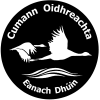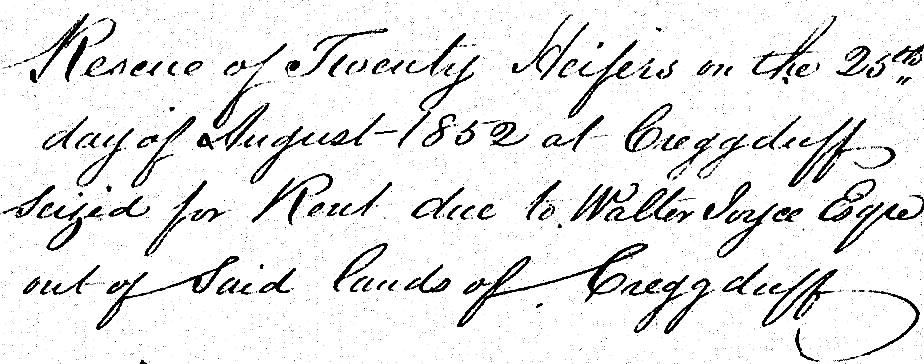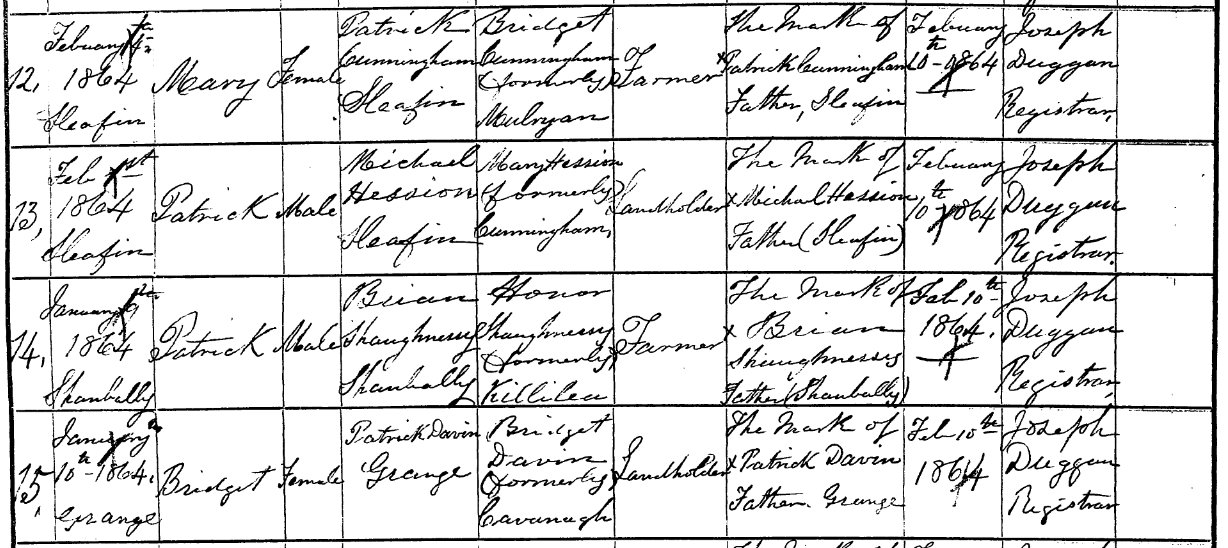The Kingdom of Maigh Seóla
By Patrick O’Flaherty
Where was it? When was it? and why should we be interested in it?
The Kingdom of Maigh Seóla occupied ‘the fertile plains which lie east of Lough Corrib between Galway and Tuam’. It was centred on Lough Kime (today called Lough Hackett).
Its origins lie in the 5th century and it flourished until 1185 when the last king, Rory of Lough Kime was overthrown by and killed by his enemies the O’Connors.
Many of the features of our lives today originated with the Kingdom of Maigh Seóla; these include the introduction of Christianity, the introduction of surnames and the construction of many of the ruins we see around us.
Origins
The Connachta were a group of people who came to prominence at some early point, certainly well before 400 AD. They took their name from their ancestor Conn Ceadchathach (Conn of the Hundred Battles), High King of Ireland. Our western province was known before they came to power as Ól nÉacmacht but has been known ever since as Connacht.
The tradition is that the province was divided among the three Connachta or three sons of Conn: Fiachra, Bríon and Ailill. In time, Bríon’s descendants, the Uí Bhríon, further divided and the people who lived in the area known as Maigh Seóla came to be called the Uí Bhríon Seóla and they established the Kingdom of Maigh Seóla.
Maigh of course is the Irish for plain, so Maigh Seóla, the plain of Seóla.
The Coming of Christianity
The historical records from Connacht in this early time are very few, but it is recorded in the Life of St Patrick that he visited ‘the halls of the sons of Bríon’. This would be the first historically documented event in the story.
The historian Roderick O’Flaherty tells us in his book Ogygia that these halls were in the plains of Maigh Seóla where the Saint baptised six sons of Bríon and erected Domnach-Mór (today Donaghpatrick) cathedral near the banks of Loch Hackett. This must have been sometime between the start of Patrick’s mission in 432 and his death in 493.
A King of Connacht named Áed mac Echach Tirmcharna who is recorded as having died in 575 was from the Uí Briúin branch of the Connachta. It was this Áed who donated the site at Annaghdown to St Brendan for his monastery.
Moving ahead some hundreds of years, in 1189 Conn O’Mellaigh is the first bishop of Annaghdown whose name is recorded, although the diocese may have been founded sometime before then. The next bishop of Annaghdown, Murchadh O’Flaherty, travelled to Rome in 1215 to attend the fourth Lateran Council.
Beginnings of the Kingdom of Maigh Seóla
The Uí Bhríon of Maigh Seóla claimed the title Kings of Iar-Connacht of which Maigh Seóla was part. At this time Iar-Connacht covered the entire area east and west of Lough Corrib. Later it was reduced to the area west of the lake from Galway to Leenane.
They also claimed the kingship of Connacht when they were strong enough to challenge their Uí Bhríon Aí cousins to the north, although it was the the Uí Bhríon Aí who were generally the stronger and held the kingship of the province.
The leading dynasty of Maigh Seóla were the Muintir Murchada named after the founder of that branch of the family Morogh, who died in 891 (or 896).
Morogh’s son Urcadh ruled after him and is listed in the book of Ballymote as King of Iar-Connacht. Urchadh died in 945. His daughter Bebhinn married Cennétig King of Thomond and these were the parents of Brian Boru. Another daughter Creassa married Tadg Mac Cathail King of Connaught.
This must have been a time when Maigh Seóla was of some importance in the wider world. Urcadh had his title as King of Iar-Connacht recognised at a national level, his sisters were married to the Kings of Connacht and Thomond.
It is remarkable that the political circumstances remained unchanged for so long, the kings of Maigh Seóla claiming direct descent from Conn of the Hundred Battles many centuries earlier, with no dramatic change in circumstances since the Connachta came to Connacht. Their political objectives remained much the same over those centuries: to exert their authority over their subject peoples in the west of Iar-Connacht, to resist the pressure of the Uí Bhríon Aí to the north who would reduce their status if they could.

The Origin of Surnames
At about this time surnames as we know them today evolved in Ireland, possibly due to political changes that concentrated power within closer family groups. Ireland was one of the first European countries in which a system of fixed hereditary surnames developed. The earliest names appear to be those incorporating Ó or its earlier form Ua, meaning “grandson”.
The first person in Maigh Seóla to use a surname was Muredach Ó Flaithbheartaigh; this Muredach was King of Maigh Seóla until his death in 1034. From that point surnames became the norm in Maigh Seóla, as they did generally throughout the country.
What is unique or nearly unique about the surnames of the families of Maigh Seóla is that the details of very many of them together with the townlands where they lived have been recorded and are still available: names such as Flynn, Canavan, and Kilgannon, O’Halloran, Lee, Colgan, Duane, Faherty, and Kilkelly.
During the 10th century
After many centuries of little political change, when the political and military activities of the Kingdom of Maigh Seóla consisted of asserting themselves against a largely unchanging set of neighbours, the Uí Bhrión Aí (O’Connors) to the north, the Uí Máine (O’Kellys) to the east and the Conmaicne Mara and other non-Chonnachta peoples to the west, things begin to change rapidly after 1000 AD.
The 11th and 12th centuries
Three major conflicts in the space of a century led to the end of the Kingdom of Maigh Seóla.
The first conflict was between O’Connor and O’Flaherty for supremacy in Connacht. After a long struggle marked by treachery and savagery it would appear that the O’Flahertys accepted the second place.
The second conflict saw the O’Flahertys and the O’Connors uniting to resist the efforts of the O’Brien Kings of Thomond to overrun Connacht. In 1137 Cathal O’Connor and Brian O’Flaherty defeated the forces of Dermot O’Brien and drove the Munster forces out of Connacht. While there were further raids and counter raids, the O’Briens efforts to overcome Connacht receded as the century went on.
The third conflict began with the arrival of the English after 1169 brought new pressures and opportunities for some.
The events of those centuries were bewilderingly complex and are perhaps best approached through the career of Turlough O’Connor.
Turlough O’Connor
Turlough was born in 1088, the son of Rory O’Connor, King of Connacht, and his wife Mór, who was a daughter of the O’Brien King of Munster.
When Turlough was 4 years old his father was blinded by Flaherty O’Flaherty, who became King of Connacht for about 6 years before he in turn was overthrown.
After that the province of Connaught came under the sway of Turlough’s uncle Muirtagh O’Brien, who was High King of Ireland. After his father’s death, Turlough was reared in Muirtagh’s house and In 1106 Muirtagh supported Turlough to become King of Connacht. Turlough was very successful in that role and by 1120 he had established himself as High King of all Ireland. It would appear that the O’Flahertys supported him at this stage, perhaps realising that they could not hold the Kingship themselves. It may be that O’Connor support for the creation of the diocese of Annaghdown, effectively the O’Flaherty’s own diocese, as Tuam effectively belonged to the O’Connors, was the reward for the O’Flaherty support.
In 1166 Turlough’s son Rory O’Connor became High King.
The End of the Kingdom of Maigh Seóla
After Rory abdicated in 1183 there was a struggle for leadership of the O’Connors between Rory’s sons and his much younger half-brother Cathal (later known as Cathal Mór of the wine red hand). Cathal allied himself with the newly arrived De Burghs to attack the O’Flahertys. In 1185 this Cathal O’Connor with a force of Norman-English De Burgh captured and killed Rory O’Flaherty. His defensive walls at Lough Kime were said to be 30 feet high.
The O’Flahertys and their allies struggled on for some years after that and controlled Lough Corrib together with the sons of Rory O’Connor, who had been usurped by Cathal until 1225 when the De Burghs inflicted a second major defeat on them. They were forced to give up their boats on the lake.
The O’Flahertys then retreated to their territories west of the Lake, where they continued to rule the independent Kingdom of Iar-Connacht for many centuries.
Sources
O’Flaherty, R., Ogygia part III page 293. Translated from the Latin, McKenzie, Dublin, 1793.
O’Flaherty, R., Iar-Connacht. The Irish Archaeological Society, Dublin, 1846.
Ó Cróinín, D., Early Medieval Ireland 400-1200, p. 81. Routledge, Oxford, 2017.
Ó Muráile, N., A tract on the Connacht territory of Muintir Mhurchada, Journal of the Cork Historical and Archaeological Society, 2008, Vol. 113.
Lynam, E.W., The O’Flaherty Country, Studies, Vol 3, No 10, June 1914.
Duffy, S (editor), Medieval Ireland An Encyclopedia. Routledge, New York, 2005.
Thanks to Dr Jessica Cooke, from whose lecture to the Society came one of the ideas for this piece.
Note: This article originally appeared in our Summer 2020 Newsletter.


